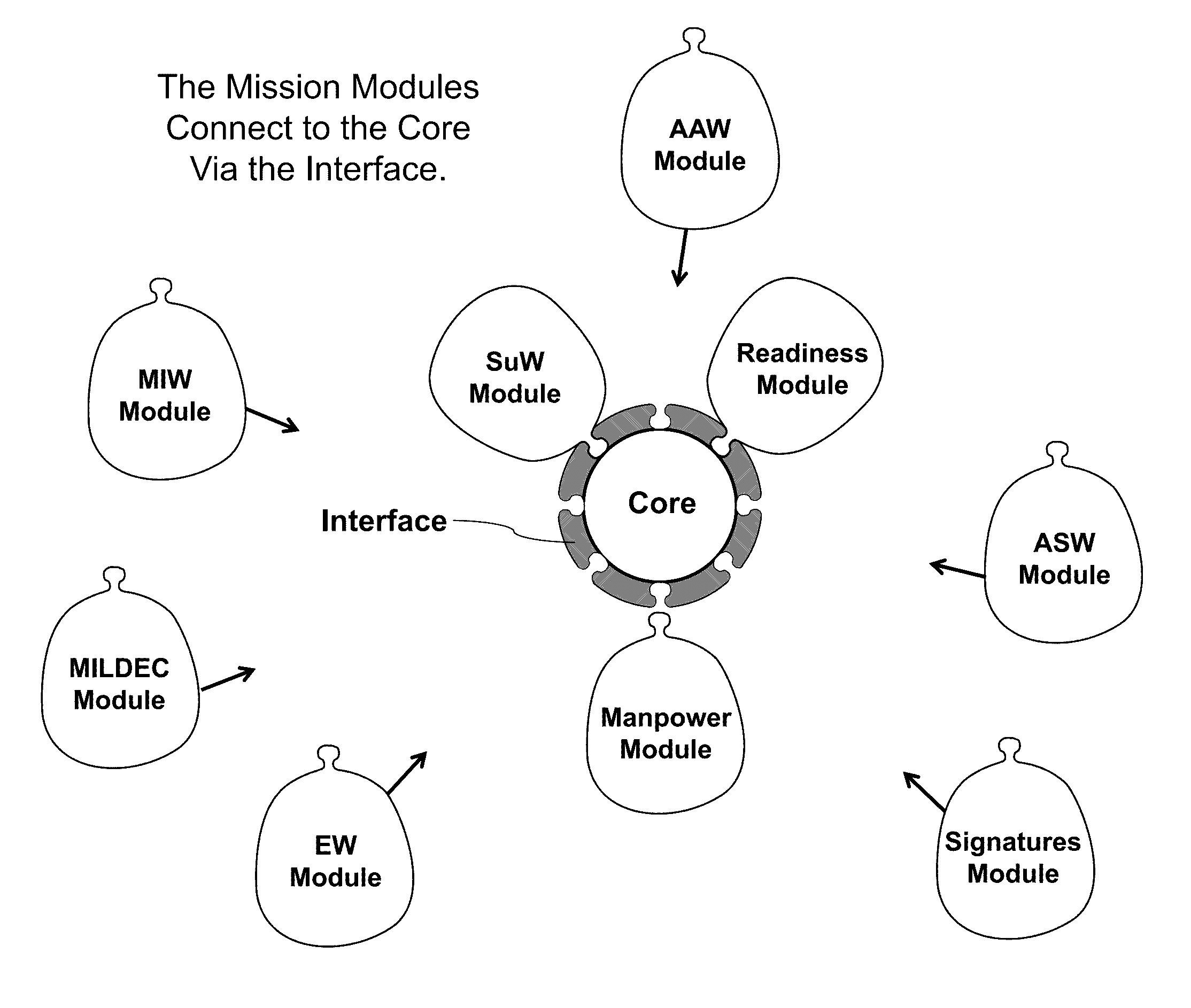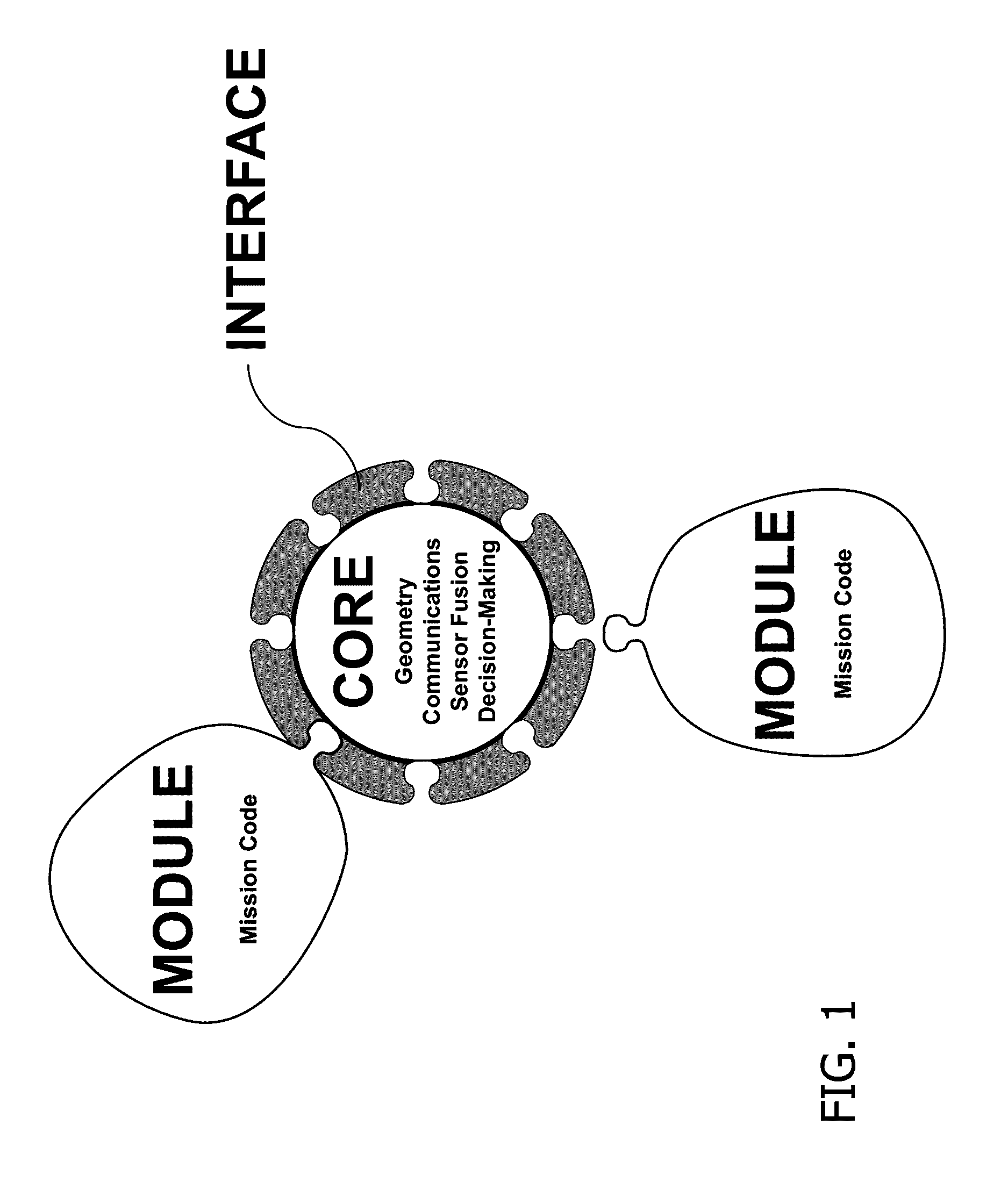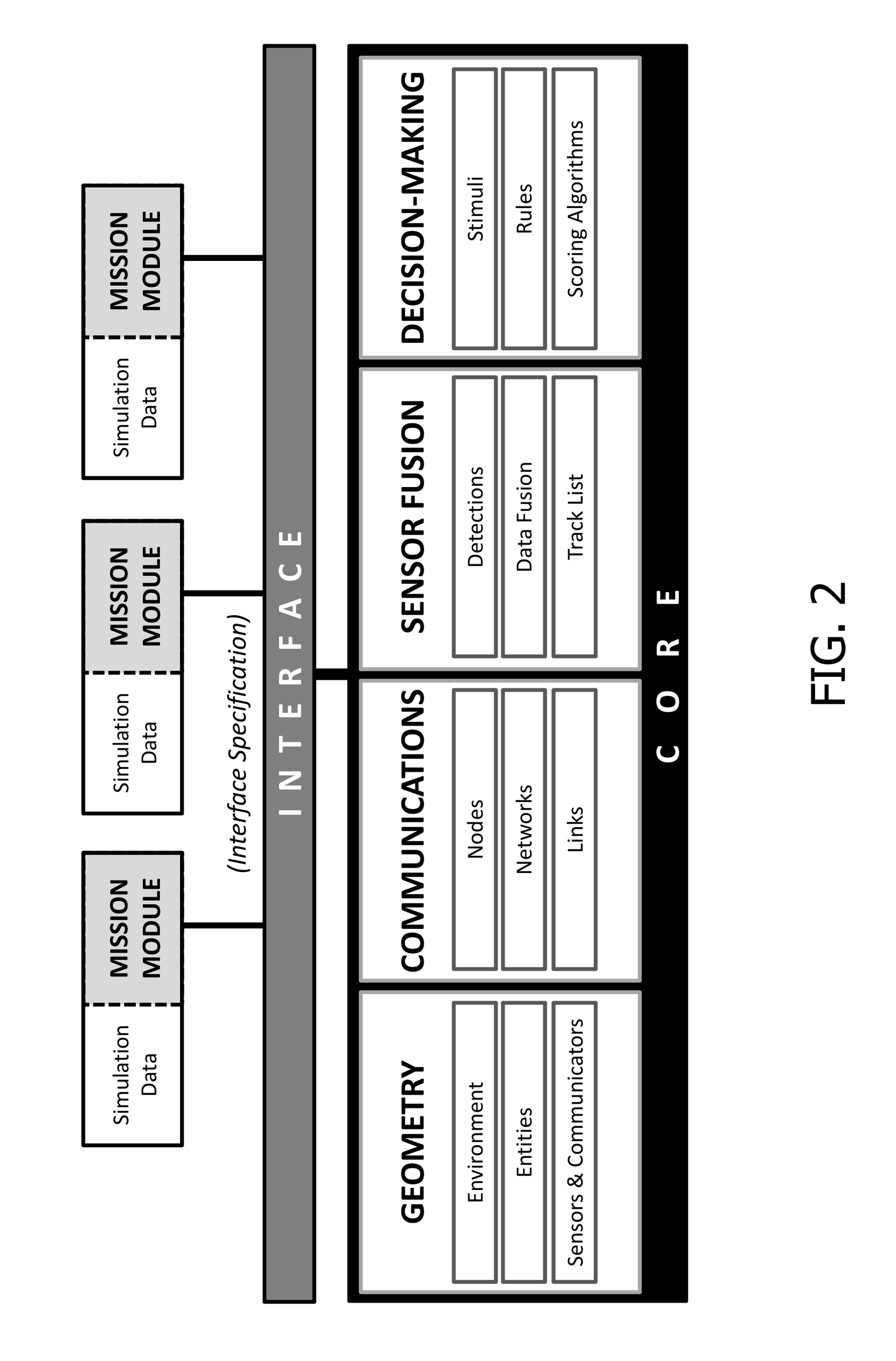Core-modular interoperability architecture for modeling and simulation
a core-modular, interoperability technology, applied in the direction of source code creation/generation, instruments, analogue processes for specific applications, etc., can solve the problems of inability to achieve universal interoperability of simulations, inability to implement hla workarounds, limited success, etc., to reduce model development time and cost, and expand the usefulness of mission modeling, the effect of less lead tim
- Summary
- Abstract
- Description
- Claims
- Application Information
AI Technical Summary
Benefits of technology
Problems solved by technology
Method used
Image
Examples
Embodiment Construction
[0030]Referring now to FIGS. 1 through 3, the fundamental concept of the SimCore architecture is its three-part composition, viz.: (i) the Core; (ii) the Modules; and, (iii) the Interface.
[0031]The core of the inventive architecture manages all data shared among the plural modules, including (i) Geometry, (ii) Communications, (iii) Sensor Fusion, and (iv) Decision-Making. The modules of the inventive architecture contain all the functionality required to model the mission areas of interest. The interface of the inventive architecture facilitates connecting the modules to the core and controls access to shared data.
[0032]The present invention features a “core-modular” architecture. In furtherance of universal navy mission modeling interoperability, the present invention's Navy mission modeling architecture employs “plug-and-play” functionality. Of particular note, exemplary inventive practice is attributed with plug-and-play expandability, suitable for complex analyses. By enabling s...
PUM
 Login to View More
Login to View More Abstract
Description
Claims
Application Information
 Login to View More
Login to View More - R&D
- Intellectual Property
- Life Sciences
- Materials
- Tech Scout
- Unparalleled Data Quality
- Higher Quality Content
- 60% Fewer Hallucinations
Browse by: Latest US Patents, China's latest patents, Technical Efficacy Thesaurus, Application Domain, Technology Topic, Popular Technical Reports.
© 2025 PatSnap. All rights reserved.Legal|Privacy policy|Modern Slavery Act Transparency Statement|Sitemap|About US| Contact US: help@patsnap.com



